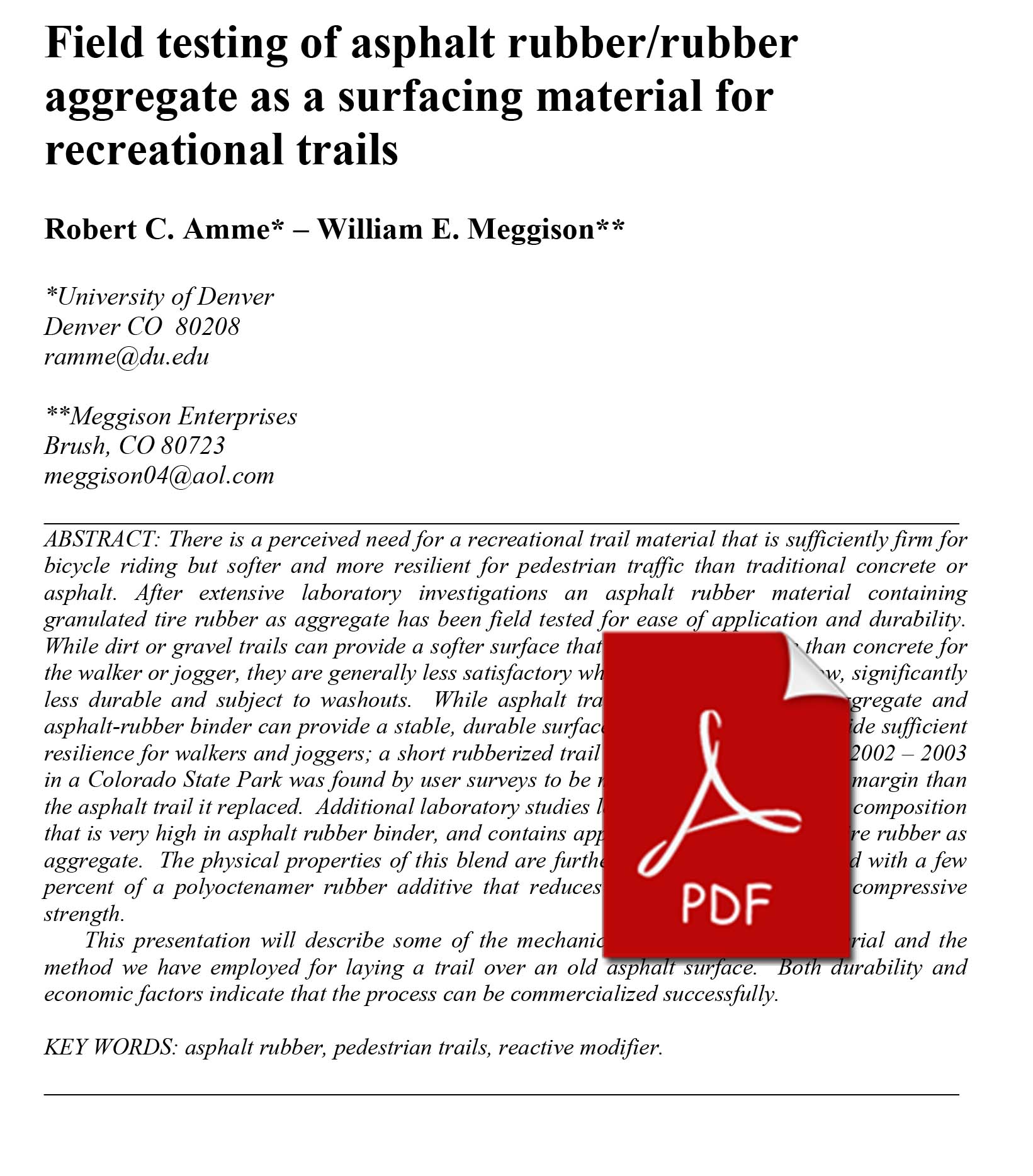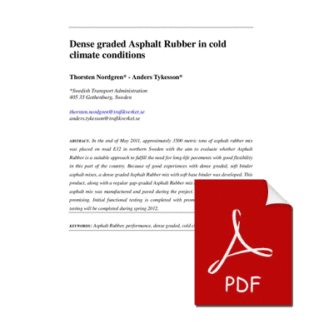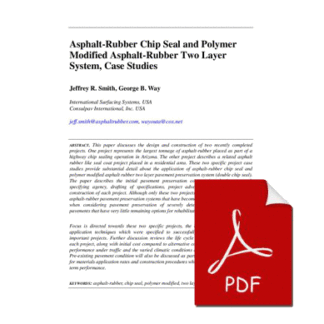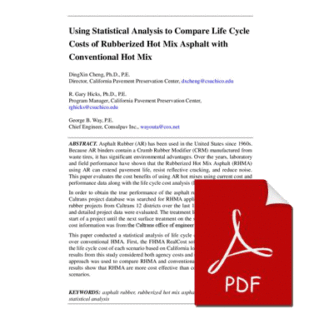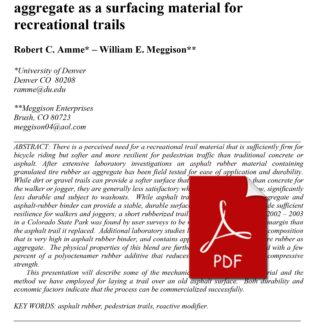Description
There is a perceived need for a recreational trail material that is sufficiently firm for bicycle riding but softer and more resilient for pedestrian traffic than traditional concrete or asphalt. After extensive laboratory investigations an asphalt rubber material containing granulated tire rubber as aggregate has been field tested for ease of application and durability. While dirt or gravel trails can provide a softer surface that is more comfortable than concrete for
the walker or jogger, they are generally less satisfactory when wet from rain or snow, significantly less durable and subject to washouts. While asphalt trails consisting of stone aggregate and asphalt-rubber binder can provide a stable, durable surface, they simply do not provide sufficient resilience for walkers and joggers; a short rubberized trail constructed and tested in 2002 – 2003 in a Colorado State Park was found by user surveys to be more popular by a 95+ % margin than the asphalt trail it replaced. Additional laboratory studies led to the development of a composition that is very high in asphalt rubber binder, and contains approximately 50% ground tire rubber as
aggregate. The physical properties of this blend are further enhanced when modified with a few percent of a polyoctenamer rubber additive that reduces tackiness and increases compressive strength.
This presentation will describe some of the mechanical properties of the material and the method we have employed for laying a trail over an old asphalt surface. Both durability and economic factors indicate that the process can be commercialized successfully

